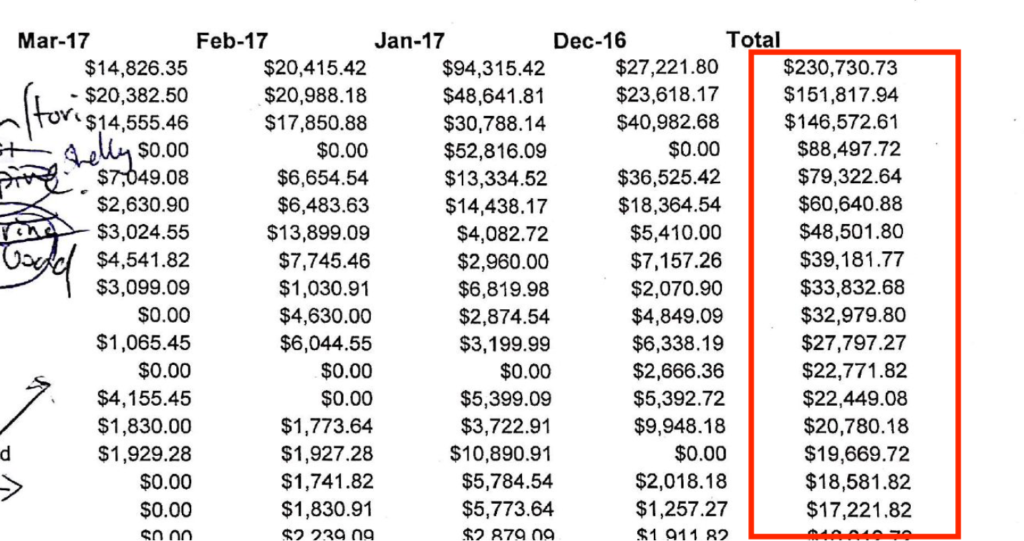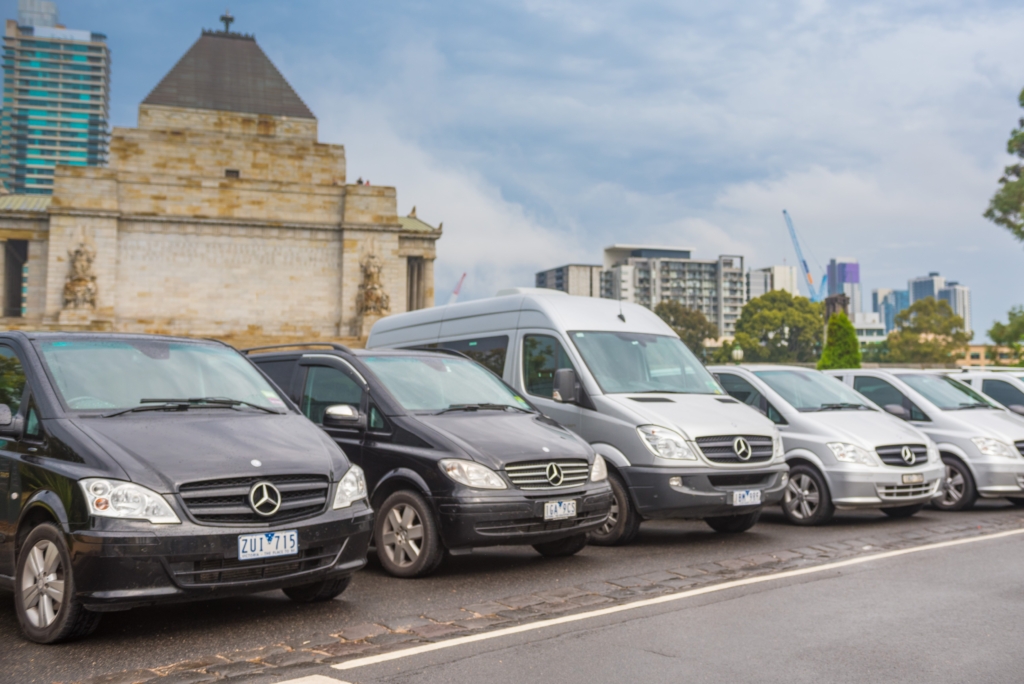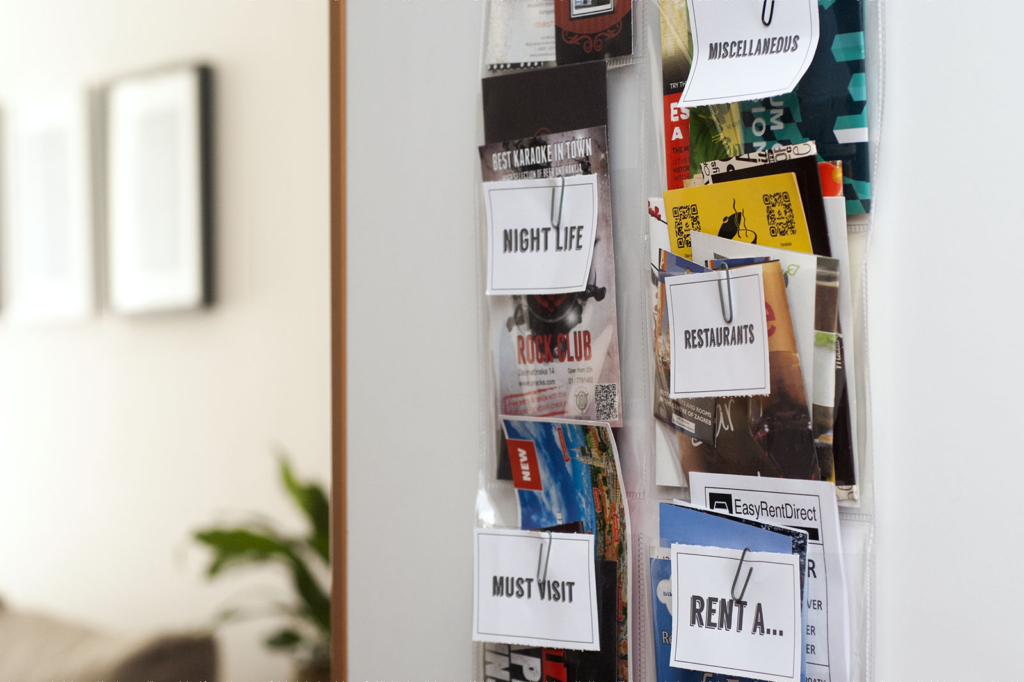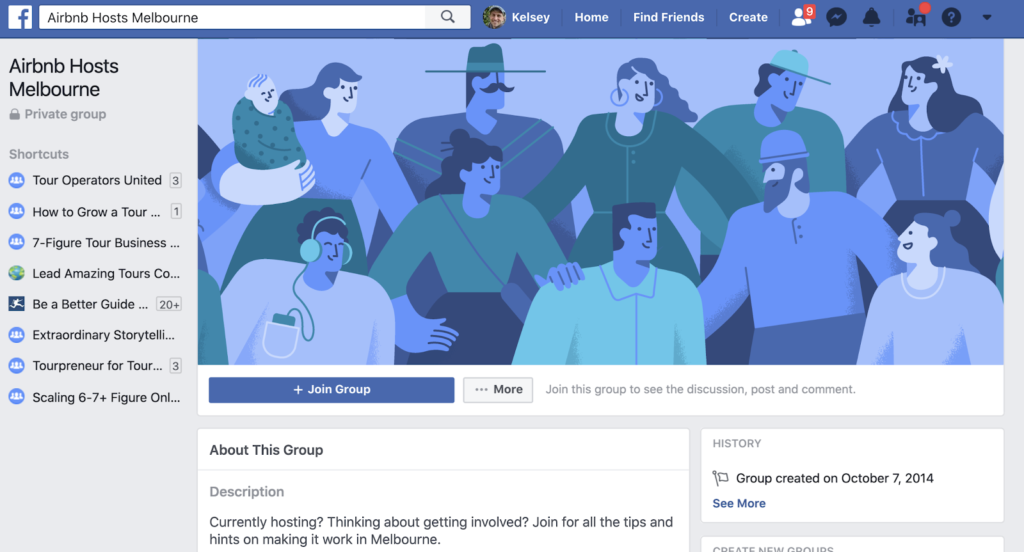If you run a tour or activity business, chances are your thoughts are often consumed by sales and bookings,
Ie, how to get more of them
How to find more customers…
How to increase profits and make your bottom line healthier…
How to make your business more resilient…less reliant on key sources of bookings
Because we just don’t know what’s around the corner that could knock us off course.
I started my tour business back in 2008, at a time when global travel was still recovering from the outbreak of SARS and just a few months before the Global Financial Crisis really took hold.
Then within a year I had to deal with the impact of a Swine Flu epidemic, ‘once in a generation’ bushfires in Melbourne’s surrounds that put a stop to 80% of my tours for an entire peak season…and a US dollar that lost a ton of value, causing bookings from the USA to dry up almost overnight – our number one visitor market.
It wasn’t a great time to be starting a tour business.
But on reflection, it was the best possible initiation to ‘tour business owner’ I could have hoped for. I learnt quickly that I had to hustle…to find a way. I needed to find lots of different customers. And I needed to customize tours to appeal to different markets.
If a sales channel dried up, I knew I could shift focus and double down on the channels that were performing.
So, this list of ‘sales channels’ below, is going to help you explore and implement lots of new avenues to bookings and diversify your tour business to keep it healthy, resilient and highly profitable for years to come.
But before I dive in… why exactly is it smart to diversify your sales channels?
Here are 4 key reasons:
#1 You may have a huge reliance on one Online Travel Agent, or one Inbound Tour Operator or reseller…but guess what? Businesses can and do collapse. Imagine if that happened to your biggest supplier of bookings and literally overnight the tap was turned off and bookings dried up completely – and a calendar full of forward bookings were cancelled.
#2 If you’re selling a lot of tours via online channels, algorithms can and do change also and you might wake up one day and find the visibility and positioning of your tours has completely changed overnight if a distributor shifted strategy.
#3 International travel markets can be affected for many different reasons (economic, political, environmental) and visitors from one country or region could dry up almost overnight (not ideal if this is your number one source of customers). If this happens then you definitely want to be producing bookings through other channels and from different markets.
#4 Different channels and different travel markets have different peak and slow periods. This helps to combat seasonality. Take for example the Singaporean market, who love to visit southern Australia through June and July (right out of peak season) and get a dose of winter weather (a novelty for them). Visitors from India and from the Gulf Countries love to travel ‘off peak’ as well.
Another great example is the corporate market. The needs of the corporate market run through all 12 months of the year (company Christmas experiences, team building days, end of quarter team rewards, pre and post conference tours and events…). This adds an awesome new dimension to a tour or activity business that’s heavily reliant on a short peak season.
So here are some ideas that you could adopt – or adapt and implement to grow your business by exploring different markets and different booking channels offline:
1. TRAVEL AGENTS
Why should you consider selling your tours through carefully selected global travel agents, Travel Wholesalers, Destination Management Companies and Inbound Tour Operators?
The international exposure you’ll receive for your tours or activities is next level.
The scope that resellers have often goes far beyond the reach of a single tour or activity operator. Good travel partners take part in multiple international trade shows, workshops and sales calls every year.
When they’re out there doing deals, meeting potential partners, pitching themselves and building relationships, they’re not only talking about their business.
They’re pitching the experiences they use — and they’re using their tourism expertise and experience to pitch your company to the right international travel partners that will love what you have to offer.
So, if you are paying a travel partner a 20-30% commission, you can be assured that the good ones are putting that money towards marketing and promoting your experience. That’s marketing $$ you don’t need to find.
Plus, they offer a reliable source of income.
Once your relationship with the right travel partners is in full swing, you’ll discover that the ones you really connect with can deliver a super consistent and reliable revenue stream.
This is something you can rely on year in, year out, and will give you the confidence to make smart business decisions.
I’ll give you an idea of how this tactic impacted my business. At the time that we were generating over $2 million in annual sales, our top five travel partners were bringing us $700,000 annually.
When you looked at our top 10 travel partners, they were worth over $1 million in annual revenue. This revenue had grown by between 1.5% and 2% for four consecutive years.
The consistency in growth made it easy for us to make the decision to sell through these channels. And ultimately, it was a decision that helped propel our business forward.
Let’s take a look at the figures from this time:

There it is.
The real annual revenue generated by each of my top 15 travel partners in 2017.
Whatever your business size, travel partners can provide a game-changing opportunity to make some serious additional revenue.
Plus, as I said, it’s ultra-consistent revenue – and that’s the holy grail for a small tour operator.
2. THE CORPORATE MARKET
The thing I love most about the corporate market is the unlimited potential.
There are so many opportunities to grow your business here:
- Company and Departmental Christmas Parties
- End of Financial Year Events
- Team Building Events
- Reward and Recognition Days
- Hosting international guests
- Pre & post conference tours
- Social Club tours and activities
- Partner program and hosting/entertainment for international visitors
And the best bits?
#1 The opportunities aren’t seasonal. There are opportunities for bookings year-round – many of which fall outside peak travel times. There’s also the likelihood that you can start generating bookings now if you get ‘in’ with the right decision makers, rather months down the track (as can be the case with OTA’s or Travel Partners)
#2 The market is massive. Consider how many businesses in and around your city potentially have a need for what you offer. In larger companies, there is also scope for multiple annual needs from multiple departments. If you get ‘in’ with, say, one of the major banks, then you could find yourself running company-wide team building days, pre and post conference tours, reward and recognition days, departmental Christmas parties, end of financial year activities and more.
#3 I’ve always found it to be a highly lucrative market. Not only are the sales commission-free, but generally the numbers you’re seeing per tour/activity/event are larger than normal. For us, more customers per tour, event or activity translated directly into more revenue and bigger profits.
3. HOTEL AND ACCOMMODATION PROVIDERS
Hotel concierges were a booking channel that worked really well for me in the early stages of my business. The relationships I built, and the subsequent bookings really got that fly wheel spinning and the cash register ringing quickly when I was starting out.
At the time, I had no marketing budget for memberships, brochure inclusions, SEO or web design or improvements. I couldn’t afford to wait months to start getting traction with Travel Partners or OTA’s. But what I did have was time, lots of energy – and I was desperate to succeed.
So how did I start generating booking via Hotel Concierges? I worked really hard to build awesome personal relationships.
I kept showing up. I listened and I learned.
Because as we grew into a more established business – a tip I can offer you here is that hotel concierges are incredibly loyal.
They like to have their ‘guy’ or ‘girl’. Things like regular email banter, sharing of on tour images, inviting to industry events, giving a ‘heads up’ on cool things going on in town, fresh and regular personal messages to show you care and see them as a friend more than just a sales channel…these kinds of things go a long way to ensuring a concierge is loyal to you
So, here’s what I learned about growing sales via hotel concierges…
Make their life easy. When the phone rings, the answer should always be ‘yes’. They’re super busy people with lots of customers with high expectations often standing right in front of them whilst a concierge speaks with you, demanding they deliver.
But if you just can’t do it, help the concierge come up with another solution. Shift the focus to what you can do to help. They’ll appreciate and remember your effort to help them find a solution (example: “Look I’m really sorry, I can’t get there right now for a last-minute city sights tour as I’m due to collect some guests in 10 minutes. What I can do however is offer your guests a late afternoon ‘highlights’ version of the tour, including an early dinner at one of my favorite city hotspots – and return them to the hotel in the early evening…how does that sound?”
Remember that most hotels are different. It’s important that you learn about their internal procedures. How do they work? Don’t make assumptions about them or their hotel guests. What do you need to do differently to win their support? How does their booking and payment process work? I would avoid telling a concierge how things work in your business and what they need to do to fit in. Go about it in reverse.
Make a concierge feel special. An attitude like ‘I’m only doing this for you’ is going to go a long way to winning their support.
Be consistent and reliable with your booking incentives

4. OFFICE BUILDING CONCIERGES
In many cities around the world, we are seeing the ‘concierge’ springing up in the marbled lobbies of city office blocks – in addition to exclusive hotels.
In office buildings in cities all over the world, the days of an unattended desk, and a floor directory on the wall are gone and an upmarket hotel lobby, complete with hotel-trained staff is becoming the norm.
This presents a wonderful opportunity for tour and activity operators to drive all kinds of business (weekend social tours and events, visiting family activities, company reward and recognition days, team building, Christmas events and more)
Why couldn’t you customize something specifically for that office building and promote it through the concierge? Then organize a familiarization trip for company decision makers – and the office building concierge team to see first-hand how great you are!
Check out https://firstcontact.co/ to get a sense of what kind of services an office building concierge team provides – and how you might partner with them.
5. OWNERS OF RENTAL ACCOMMODATION (AIRBNB, VRBO, HOMEAWAY)
Where are your ideal customers staying while they are in destination?
Definitely not just at hotels. In a little over a decade, we’ve seen Airbnb (heard of them?) go from zero to a site listing more than six million rooms, flats and houses in more than 81,000 cities across the globe.
Since 2008, more than half a billion people have booked with Airbnb and around two million people each night put their head on a pillow in an Airbnb listed property. Make no mistake as well, the popularity of sites like Airbnb, Home Away, VRBO as an accommodation booking alternative is only expected to grow. If you’re not working directly with these property owners, then you’re missing a huge opportunity.
A great way to start generating bookings is by creating special offers for property owners. You could do something like a ‘Give 10/Get 10’ deal, where a property owner makes a 10% commission on tour sales – and their guest gets 10% off by using a special coupon code.
There are plenty of ways a mutually beneficial arrangement could look.
If a ‘welcome pack’ is provided, your tour brochure with a discount coupon code could be front and centre:

Or a property owner might want to add a brochure rack with a small selection of preferred experiences and details of a unique guest discount:

But the question you’re probably asking is:
How do I find these property owners and communicate with them?
You can try to use the messaging services of the platforms themselves, though this may violate their policies. Also keep in mind that sending websites and/or contact information like phone numbers and emails by message is usually blocked by these platforms.
You might try starting a conversation by asking the host about their recommended local tours and activities. Maybe you’re interested in using their property in the future for some friends and family? Keep the conversation as far from a direct solicitation as possible and use your business name vs sending your business email or website.
But we feel there are better methods of reaching these hosts in a less limited environment.
Another approach is through Facebook ‘Community Notice boards’.
Here’s one from my home town:


As you can see, there are 41,000 members in this group – and there’s plenty of activity.
It’s a great way to put a shout out to property owners in your destination so you can start chatting and explore working together.
Even better, look for facebook groups that are specifically for Airbnb Hosts in your area!
This is the perfect way to communicate with those actively renting out their homes

These ‘community notice boards’ can be found all over the world – and I’m sure there’s one in your destination.
6. COLLABORATIONS – LOCAL TOURS OR ACTIVITIES (DIFFERENT EXPERIENCE/SAME CUSTOMER)
What kind of tour or activity within your destination would share your customers and compliment what you offer?
Pull together a list and start viewing these as potential collaborators, rather than competitors
For example, if you run a foodie walking tour, you might reach out to the operator of a laneway walking tour, a boutique brewery tour, a sommelier-led experience or a cocktail experience.
If you run bike tours, you might reach out to a kayak experience.
Or, if you run SUP tours, is there an operator in your destination running sailing adventures, or surf lessons?
Ideally reach out to tours or activities with a similar theme or style to yours at a similar price point.
Get some dialogue going. To make sure you’re both a good fit you might want to ask a few questions like:
- What kind of customers are taking their tour?
- Which international markets do they appeal to and are generating bookings from?
- Are they having success with specific interstate and intrastate market segments?
- What’s been working? What’s not?
- What kind of trends are they seeing?
- Are there emerging markets in which they are getting traction?
You’d be surprised how many of your fellow tour and activity operators would be more than happy to have a chat with you and share their experience and insights and explore a collaboration.
There are many great examples of such initiatives all over the world.
One such is: https://experiencevancouvergroup.com/

This is a great example of local operator collaboration. Five locally owned tourism businesses – all with an army of raving fans, an impressive collection of five-star Trip Advisor reviews and all with a strong belief in each other’s product.
This is one of the best examples of a collaboration I’ve seen and has enabled all 5 to grow their businesses significantly.
They have common goals – and have shared their marketing and promotion costs to build the ‘Experience Vancouver Group’ platform, which has provided them with far greater reach.
They are now playing a bigger game.
What’s stopping you doing something similar in your destination?
7. OTHER TOUR OPERATORS. SAME TOUR/DIFFERENT LOCATION
Where are your customers going next after they leave your destination?
Where have they just arrived from?
Reach out to other tour operators offering a similar kind of tour to yours in these destinations.
For example: If you’re running a 10 pax foodie walking tour in Melbourne, Australia that retails at $179 per person, reach out to operators running similar tours in major destinations in Auckland, New Zealand, or in Sydney, Tasmania, or Perth.
My ideal customer was a 45-65 American couple on a first time, 3 week Australia/New Zealand trip and many customers had a very similar itinerary.
It often looked something like this:
New Zealand (7 nights) > Melbourne (3 nights) >Kangaroo Island (3 nights) > Uluru (2 nights) > Great Barrier Reef (3 nights) > Sydney (3 nights)
if you serve a lot of international visitors, do you have a pretty good idea what a common travel itinerary for your ideal customer looks like?
If so, you should be collaborating with a group of tour/activity operators in these destinations to increase sales.
By reaching out, these fellow tour operators will no doubt be grateful for the support, for your efforts to build a like-minded community – and for the chance to learn from you as well.
Share your insights:
- Which visitor markets are hot?
- Which ones have dropped off?
- Which markets are spending?
- What are customers wanting?
- What’s working?
- What’s not?
- What patterns are you seeing with enquiries and with forward bookings?
- Who’s got great agent connections they can share?
So what could this collaboration look like?
You can go about it in plenty of different ways…but the key is to be ultra-professional about it. You don’t want a ‘wishy washy’ “Hey we should send each other some customers” kind of approach.
That never works.
You need to document your idea for a collaboration with a considered proposal, with goals and targets, clear responsibilities, practical sales and operations processes and regular check ins to review.
Why don’t you be the one to get something going?

8. LOCAL BUSINESSES THAT SHARE YOUR CUSTOMER
What other things are your customers doing while they’re in town?
Are they dining out at the city’s best restaurants? Hitting a wine bar or two?
Taking in a show? Indulging in a little retail therapy?
Do a little digging while you’re with your customers and find out exactly where they’ll be spending their time (and money) while they’re in town.
Pull together a list and start getting in touch.
Who’s sharing your customer?
Which of these businesses would be willing to collaborate with you?
So how would this collaboration look?
There are a myriad of ways that you could promote each other’s businesses and increase bookings and sales if the fit is a good one.
9. CLUBS, GROUPS OR SOCIETIES PASSIONATE ABOUT YOUR NICHE
If you run wildlife adventures, or bird watching experiences…or brewery tours, you should be marketing and promoting your products to groups of people that are passionate about your niche.
A great way to find potential customers in your target market and let them know what you do is to show up online in clubs and groups – Facebook and Linked In groups work especially well.
Reading group posts and comments are an unbelievably valuable way of learning more specifics about your target market’s needs, passions, desires, ways they like to experience things – and problems you can solve.
Joining groups in your niche is also a great way for you to start showing up and becoming recognized as an authority.
Remember though…you don’t want to be ‘spammy’ and be seen to be promoting your tours or your business.
Your aim should be to start showing up and provide value to the group. By doing so you’ll quickly become seen as an authority in your niche.
The marketing and promotion will happen organically once you’re seen as an authority in your space.
Take bird watching as an example.
A quick search on Facebook reveals groups like:
Or if you run ‘coffee’ tours:
To start showing up in these groups, adding some value and building your authority is a highly effective way of finding new customers in your niche.
The next logical step would be to start a group of your own!
10. HIGH SCHOOL, UNIVERSITY OR COLLEGE GROUPS WITH A SPECIFIC COURSE FOCUS
Is yours a niche experience?
Do you run a culinary tour?
Or perhaps you run a tour with a design focus or a history focus?
Is yours an ‘outdoors’ experience?
If so you should really consider drawing up a list of High Schools, Colleges and Universities in and around your destination that have a program aligned with your niche.
By this I mean a High School with a food science or outdoor education program. Or it could be a college that offers an architecture degree course, or perhaps a university that offers Australian history as a subject option for their Bachelor of Arts course.
Get in touch, find out who the program or curriculum coordinator is and pitch them an idea. Could you customize an experience that could slot nicely into their curriculum? Institutions are always looking for ways to bring their course to life and set themselves apart in a hugely competitive environment.
Tip: Focus on what’s in it for them. How are they and their students going to benefit from this addition to their curriculum? How can you add value?
What do you need to do to your experience to ensure it blends nicely into their curriculum?
Narrow down your niche (Ie, “I’ve created this XXXX specifically for 9th grade American history students”
11. ENGLISH LANGUAGE INSTITUTES FOR INTERNATIONAL STUDENTS
This market is booming in many corners of the world – especially down here in Australia.
They might be referred to as ESL or EFL centers, (English as a Second Language/English as a Foreign Language), English Academy’s, English Language Institutes, a Center For English Language Learning.
Whatever they call themselves, there are more than 1,000 such registered institutes in Australia alone.
All of which have hundreds and potentially thousands of students enrolled. The numbers are huge and the potential opportunity to sell your experiences is massive.
You could work with English Language Institutes and international students in so many ways.
A few examples being:
- City orientation tours organised by the institute for newly enrolled students
- Organised weekend social tours and activities
- Activities for visiting friends and relatives
- Tours with an english focus that might form part of their english language curriculum
Many international students arrive with few friends or support, without a great deal to do and are desperate to meet people and to travel and explore while they are in destination (whether students are on a 5-year academic pathway, or they are in town for a short 6-week language intensive…irrespective, many different types of opportunities exist).
Start by contacting each institute.
Get to the point about what you do.
How do you think you can help?
What potential opportunities might there be?
Come armed with ideas rather than putting it back on the institute to do the thinking.
If left to them to come up with some ideas on how you could work together then its likely nothing is going to happen.
12. SET YOUR SIGHTS ON A NEW INTERNATIONAL MARKET
“But where would I possibly start?” I hear you ask…
Well, I’m going to show you how I would choose a new visitor market using my own ‘backyard’ to illustrate.
All peak tourism bodies have awesome studies, reports, up-to-date visitor stats, trends and more. Mine (Tourism Australia) does and I’m sure yours does too. If I was aiming to choose a new visitor market, my first step would be to turn to the Tourism Australia website – specifically the ‘Market and Stats’ section on their site:
http://www.tourism.australia.com/en
Now, let’s say you’ve had it on your mind for some time that there could be a bunch of potential with Singaporean visitors. You’ve had some recent Singaporean tour enquiries and you’ve even had a few Singaporean bookings via a hotel concierge – or direct through your website.
Plus, your competitors seem to have a lot of Singaporean families on their tours.
You would therefore be wanting to validate your hunch so you can get to work making inroads into this market.
I would therefore head over to the ‘market regions’ section at
Then select ‘Singapore’:
And bingo!
A ‘gold mine’ of information.
A Singapore market profile, ‘deep dive’ information on high value segments of the market, plus a whole section on how to work with this market – in this case it’s literally a ‘step by step to getting Singaporean customers’ (and we all love steps don’t we)
So you now have validation of your ‘hunch’ about this potential new market, plus specifically which segments of the market to target, what this market loves to do and how they like their experiences to look – and you now have the springboard from which to launch an all-out assault and drive some serious bookings.
Check out the ‘Tourism Australia’ website as a benchmark for what ‘market intelligence’ your governing tourism body should be making available to you.
13. PAID FAMILIARISATIONS VIA TOURISM BOARDS AND INDUSTRY ASSOCIATIONS
Familiarisation trips, or ‘famils’ can be a big revenue opportunity for a small tour business. I learnt soon after starting MPT that Tourism Australia (TA) and Tourism Victoria (TV) both had a ‘famils’ unit within their organisations with a healthy budget to host media and travel partners from various international markets all year round (more often than not outside of peak travel times) – and showcase the best that Australia has to offer.
So I made a big effort to reach out and try to build a really good relationship with these famils team members – to get them out on one of my tours at no cost to see first-hand how great we were (because the one thing that a familiarisations team is always looking for is great new products to help them promote their destination). Then I kept putting my hand up for opportunities – which started to present themselves before long.
Early on, I offered FOC (free of charge) for many of the famil opportunities I got, although this soon began to change once I had proven myself.
I soon learned that ‘famil’ opportunities fell into 2 categories:
1) Media
2) Trade
And most famils had some available budget. Trade famils offered far more opportunity for me and for these I would often offer a better rate.
Media famils could be ‘hit and miss’ and the ROI much harder to ascertain. You really had to do your research and be sure that their readers were 100% your target market – and even then, I always charged to cover my costs at a minimum with a media famil.
I learned quickly to be upfront with any famil opportunity and ask, “Is there any budget allocated for this one?”
Generally, there was a budget available and tourism bodies were almost always forthcoming about what they needed from me (whether it was 25% off retail, 35% off retail…depending on the allocated budget).
I also decided to take a membership with the Melbourne Convention Bureau (MCB) in 2012 which proved to be a great move – I soon learnt that they also had a healthy ‘famils’ budget and would only give famil opportunities to MCB members.
Let’s take 2016 to illustrate the value of an MCB membership. The MCB annual membership in 2016 set us back around $2,200 from memory, however my tour business generated more than $11,000 in paid famils in the 2016 calendar year – and the opportunities/future business that came from those famils… that $2,200 paid itself back in many, many multiples.
So… reach out to your national, your state and your regional tourism bodies.
Do they have a ‘famils’ unit? What do you need to do to be considered for an opportunity?
Once you are ‘in’ it can be a very lucrative ongoing sales channel – with opportunities that often fall outside of peak times. It’s also a great way to promote your experiences – a massive ‘win-win’.
Ok so there you go.
A whole bunch of new sales channels for you to sink your teeth into and develop.
And the best thing?
You can have a lot of success through all of these channels with a sales/marketing budget of pretty much ZERO.
Good luck!

